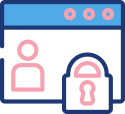Should You Have a Marketing Plan for an Insurance Agency? Why It’s Important.

Let’s be blunt. Most insurance agents don’t have a marketing plan. Instead, they rely on random acts of marketing—a Facebook post here, a paid lead there, maybe an occasional referral.
This approach leads to inconsistent lead flow, wasted marketing dollars, and unpredictable revenue.
A marketing plan for an insurance agency isn’t just a document—it’s your blueprint for sustainable growth. It tells you who to target, where to find them, how to engage them, and what to measure so you can scale your business intelligently and predictably.
If this sounds like your agency, you’re in the right place. Let’s walk through every step of creating a marketing plan that delivers real, measurable results.
What is a Marketing Plan for an Insurance Agency?
Your marketing plan will be the strategic roadmap that defines how your agency will attract, engage, and convert prospects into long-term clients.
A Strong Marketing Plan Includes:
- Mission Statement – Why your agency exists and its long-term vision.
- Target Market – Who you serve and their specific needs.
- Buyer Personas – Deep dive into the characteristics and behaviors of your ideal clients.
- Unique Value Proposition (UVP) – What makes you different from competitors?
- Marketing Objectives & Goals – Measurable outcomes you want to achieve.
- Marketing Channels – A breakdown of how to reach your audience effectively.
- Marketing Strategies & Tactics – How you’ll execute inbound, outbound, and referral marketing.
- Technology & Automation – The role of CRM, analytics, and automation in execution.
- Budget & Resource Allocation – Where you’ll spend time and money for maximum impact.
- Implementation & Timeline – The action plan for executing your strategy.
- Lead Nurturing & Customer Retention – Converting leads and keeping clients long-term.
- Performance Tracking & KPIs – Metrics that determine success and guide optimization.
When your marketing plan is well-crafted, it helps you make every marketing action have a purpose—no more throwing money at ads and hoping for the best.
Step 1: Define Your Mission Statement
Why This Matters: A mission statement isn’t just fluff—it’s the foundation of who you are, who you serve, and why you exist. Every marketing decision should align with this mission.
How to Craft a Strong Mission Statement
- Identify Your Core Purpose – Why did you start your agency?
- Describe Your Ideal Client – Who do you help, and how?
- Define Your Unique Approach – What makes you different?
Example Mission Statements
❌ Weak: “We provide great insurance coverage for all.” (Generic and forgettable.)
✅ Strong: “We help small business owners protect their assets and employees with tailored insurance solutions that fit their unique risks.” (Specific, value-driven.)
👉 Action Step: Write a one- to two-sentence mission statement that captures your agency’s purpose and vision.
Download The Free Marketing Plan Template
Stop guessing and start growing—download our free Insurance Agency Marketing Plan Template to create a clear, actionable strategy that attracts the right clients and drives real results
Step 2: Conduct a SWOT Analysis
Why This Matters: A SWOT analysis helps you identify strengths, weaknesses, opportunities, and threats so you can build a strategy that leverages advantages and mitigates risks.
How to Conduct a SWOT Analysis
✅ Strengths (Internal Advantages)
- Do you specialize in a niche market?
- Do you have strong referral partnerships?
- Do you offer better customer service than competitors?
❌ Weaknesses (Internal Limitations)
- Are you struggling with lead generation?
- Is your online presence weak?
- Do you lack automation or an efficient CRM?
🌍 Opportunities (External Growth Areas)
- Are there underserved markets you could tap into?
- Can you expand into digital marketing?
- Are there partnerships you could leverage?
⚠️ Threats (External Risks)
- Are direct-to-consumer platforms stealing market share?
- Is a competitor aggressively targeting your niche?
- Are insurance regulations changing?
👉 Action Step: Write down your SWOT analysis and use it to fine-tune your marketing plan.
Not sure how to prepare a SWOT analysis, we have you covered. Check out our post on how to do a SWOT analysis. You can also download our free SWOT analysis template.
Step 3: Conduct a Competitor Analysis
Why This Matters: Knowing your competition helps you differentiate your agency and position yourself effectively in the market.
How to Conduct a Competitor Analysis
- Identify Your Top Competitors
- Local independent agents
- Large brokerage firms
- Direct-to-consumer platforms (GEICO, Progressive, etc.)
- Analyze Their Strengths & Weaknesses
- What services do they offer?
- How do they generate leads?
- Where are they weak (e.g., customer service, pricing, technology)?
- Find Gaps & Opportunities
- Are they ignoring a niche you can dominate?
- Do they lack personalized service?
- Are they weak in content marketing?
👉 Action Step: Research 3-5 competitors, take notes, and identify how you can differentiate your agency.
Step 4: Define Your Marketing Objectives & Goals
Why This Matters: Marketing without goals is just noise. Clear, measurable objectives ensure every marketing effort drives real results.
Examples of SMART Marketing Goals
- Lead Generation: Generate 50 home insurance leads per month.
- Brand Awareness: Grow social media following by 2,000 engaged users in six months.
- Conversion Rates: Improve quote-to-bind ratio from 15% to 25%.
- Customer Retention: Reduce policy churn by 10% with an email follow-up campaign.
👉 Action Step: Set three SMART goals for your agency that focus on lead generation, conversion, and retention.
Step 4.1: Develop Your Buyer Personas
Why This Matters: Knowing your target market isn’t enough. You need a buyer persona—a detailed profile that goes beyond demographics and digs into their mindset, behaviors, and objections.
How to Create Buyer Personas
- Basic Demographics: Age, gender, location, job title, income.
- Pain Points: What risks or frustrations do they have with insurance?
- Buying Behavior: How do they research insurance? What influences their decisions?
- Objections & Barriers: What holds them back from purchasing? Price? Trust? Complexity?
Example Buyer Persona
- Name: Contractor Chris
- Location: Phoenix, AZ
- Occupation: Small business owner, general contractor
- Pain Points: Hates dealing with insurance paperwork, worried about job site liability
- Buying Behavior: Relies on referrals, prefers online quotes, rarely switches providers
- Objections: Doesn’t want to overpay, unsure about coverage options
👉 Action Step: Build at least two detailed buyer personas that represent your best clients. Not sure how to create a buyer’s persona, you can get our free buyer’s persona templates to help get started.
Step 5: Implement Marketing Strategies & Tactics
Why This Matters: You need a clear execution plan that includes both short-term lead generation and long-term brand building.
Marketing Tactics That Work for Insurance Agents
- Inbound Marketing (Long-Term Growth)
- SEO & Blogging (Rank for search terms like “best commercial insurance for contractors”).
- Email Marketing (Nurture leads until they’re ready to buy).
- Outbound Marketing (Short-Term Growth)
- Google Ads (Capture leads actively searching for insurance).
- Facebook & LinkedIn Ads (Drive awareness and remarketing).
- Referral & Partnership Marketing
- Realtor & Mortgage Broker Partnerships (Home insurance leads).
- CPA & Financial Advisor Partnerships (High-net-worth clients & business owners).
- Inbound Marketing (Long-Term Growth)
👉 Action Step: Pick 2-3 marketing strategies that fit your budget and execute consistently.
Step 5.1: Choose Your Marketing Channels
Why This Matters: Not every channel works for every agency. Choosing the right marketing channels helps you maximize ROI and avoid wasting time on platforms that don’t attract the right audience.
The Three Main Types of Marketing Channels
1. Owned Channels (You control these)
- Website & Blog (SEO-driven content)
- Email Marketing (Newsletters, nurture sequences)
- Social Media Profiles (LinkedIn, Facebook, YouTube)
2. Paid Channels (You pay for exposure)
- Google Ads (Search & Display)
- Facebook & Instagram Ads (Targeted awareness & retargeting)
- Lead Vendors (Zillow, NetQuote)
3. Earned Channels (Word-of-mouth & credibility)
- Referral Partners (Mortgage brokers, CPAs, realtors)
- Online Reviews (Google, Yelp)
- PR & Guest Blogging (Getting featured in industry publications)
👉 Action Step: Select 3-4 marketing channels that align with your budget, goals, and audience.
Download The Free Marketing Plan Template
Stop guessing and start growing—download our free Insurance Agency Marketing Plan Template to create a clear, actionable strategy that attracts the right clients and drives real results
Step 6: Implement Technology & Automation
Why This Matters: Without technology, you’re wasting time on manual processes that could be automated for efficiency.
Essential Marketing Technology for Insurance Agents
- CRM Systems: HubSpot (dedicated CRM), AgencyZoom (Agency Centric CRM) – Does your AMS provide credible CRM functionality?
- Email Automation: HubSpot, Mailchimp, ActiveCampaign
- Ad & Analytics Tools: Google Ads Manager, Facebook Pixel
- SEO & Content Tools: Google Search Console, SEMrush, Moz, Ahrefs
👉 Action Step: Invest in one automation tool that will improve efficiency in lead generation or follow-up.
Final Thoughts: It’s Time to Get Intentional About Marketing
A marketing plan for an insurance agency isn’t just a document—it’s your roadmap to predictable, scalable growth.
The best agencies don’t rely on luck. They follow a structured marketing strategy that generates leads, builds relationships, and creates long-term success.
🚀 Next Step: Download our free Insurance Agency Marketing Plan Template and start building your strategy today!
About the Author Scott Boren
Scott Boren is a HubSpot-certified marketing expert with over 20 years of experience in insurance marketing, operations, and technology. As the founder of IronPoint Insurance Services, he helps independent agents modernize their businesses, improve lead generation, and scale efficiently through automation and digital strategies.
Unlock Carrier Access & Elevate Your Agency

Hitting roadblocks with carrier appointments? The IronPoint Agent Program provides fast, easy access to top-rated carriers—even if you’re a startup agency.
- No direct appointments? No problem.
- Quick & simple onboarding process.
- Value-added tools & resources.
The Smart Way to Quote Commercial

Ditch the manual quoting struggle. CompareQuoteHQ lets you compare commercial insurance rates instantly, using either your carrier credentials or ours. With a single entry, you access multiple markets—faster and easier than ever.
- Your Digital Storefront – Embed a branded rater on your website, turning visitors into clients.
- Access More Markets – Quote our carriers plus any you’re already appointed with.
- Save Time & Close More Deals – No more duplicate data entry.

